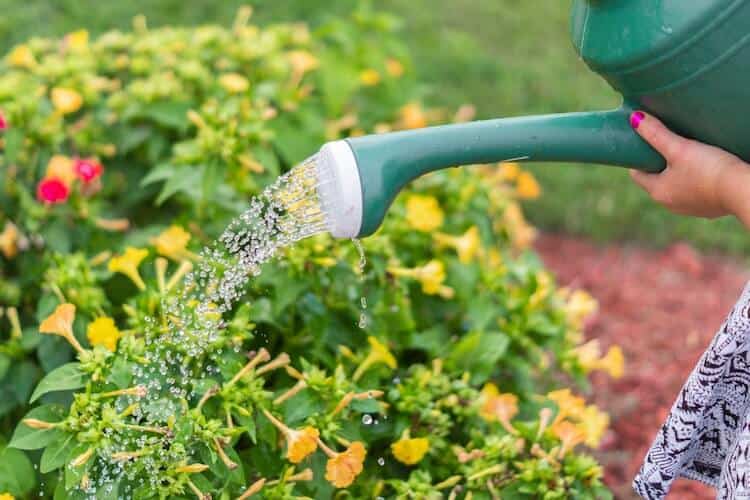What are the various signs of overwatering succulents? Well, you may not know that there's a thing like overwatering a plant and it's not your fault. Besides, we can never know it all!
Now, picture the scenario below:
You've seen them everywhere, as essential details in interior design magazines, as a centerpiece in most events and even all over social media.
These picture-perfect plants can be a total muse for the eyes, and now you are convinced to start and manage your collection of these beauties.
A few weeks down the line, you've given your succulents all the attention, watering, and caring for them well, yet you are faced with a not so picture-perfect muse.
What could have gone wrong?
Don't panic!
Your plants may have been suffering from overwatering, but you're not alone.
By the time you're done reading this article, you will be able to tell if your succulents are been overwatered and remedies to fix them.
Table of Contents
Overwatered Succulents

Succulents are natural going plants that require less attention to thrive, and they can survive for more extended periods in drought conditions.
Although this is partly true, this technique can only work if you picture your green beauties as desert plants. So, imagine scorching sunlight, minimal downpours, and desert temperatures characterized by radical changes- then they might have a survival chance.
These plants have become adapted to a desert growing condition that other conditions may not be so fitting because of their ability to withstand long periods of aridity and drought conditions. Nevertheless, this does not mean that they do not need water to survive.
For a typical plant to reach optimum growth, all that is required of you is to keep the soil hydrated, and have a proper watering schedule. But, when growing succulents, different standards may apply.
Succulent plants have a unique root system that serves as a reservoir which helps them store excess water in their stems, roots and fleshy leaves to enable them to survive in areas that suffer scarcity of rainfall and more extended periods of heat.
This feature differentiates them from other plants with complex root systems they use in search of water.
However, if you are a generous giver, you may kill your precious succulent plant with too much kindness, when you overwater them.
Succulent leaves and stems are like water balloons that can only take up a measured quantity of moisture and their root system then fill up their water storage cells until all the succulent cells are adequately hydrated.
When the balloon cells are overfilled or overwatered they become swollen and can burst open, if not managed within a few days, they become severely broken, resulting in rot roots and leaves and then death.
This death is as a result of choking, Plant soil kept too damp prevents oxygen from reaching the root system, and they die and rot away.
If this is your present predicament, there is no need to panic; life happens, and perhaps there is still a way out.
Having understood the science behind succulents now is the time to learn the signs of overwatering succulents, so it doesn't happen again. But before that how can we diagnose overwatered succulents?
Diagnosis and Treatment
Start by checking the succulent roots for any signs of rot. To do this correctly, do not be afraid to unpot the roots of your succulent from the soil.
A plant's roots are always essential to the overall health of the plant, and most of the issues can be diagnosed from the root system.
Signs of Overwatering Succulents
How can you tell if you have over generously watered your precious green plant? Luckily for you, your succulent shows a series of red-flagged signs just as they show signs when thirsty and depleted of water.
Such natural going plants right? Well, these signs make it easier for you to tell and draw your attention to adjusting to better watering practices to meet their requirements.
Translucent leaves
This is one of the first stage signs. You may begin to notice discoloration, and the leaves start to wear a bit of a faded look resulting from excess water running through the leaves instead of the damaged water storage cells.
This dilutes the leaf color making it loose its real color.
Weak leaves
Another early sign of over-watering is that leaves will look boated and start to behave flimsy, they either start to fall off on their own effortlessly, or the slightest touch or bump makes them shed.
Soft, mushy leaves
Check underneath your succulent soil for fallen leaves. Fallen leaves are easier to inspect and tell the overall condition of your plant. Soft leaves are busted from overwatering — much watering.
Rot
Overwatered succulents tend to rot from the roots, displaying pale colors and black spots.
Conclusion
Always keep in mind – water could be your succulents' friend or worst enemy. Friend or foe? You decide.
So when you question the water needs of your succulents, use a moisture meter for soil! Otherwise, you can use the tips in this guide to pay close attention to signs of overwatering succulents to save your precious green plant from rot.






Leave a Reply